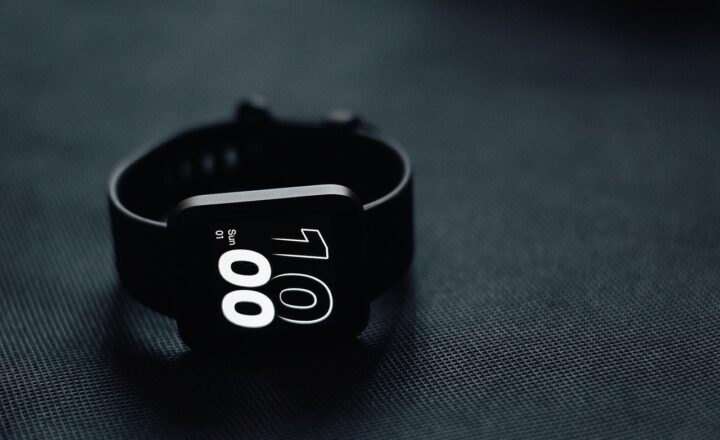Exploring the Intersection of Fashion and Technology: Wearables of the Future
November 18, 2024

The world of fashion has always been at the forefront of innovative design and creativity. Recently, however, the intersection of fashion and technology has emerged as one of the most exciting frontiers in both industries. With the advent of wearable technology, fashion is being redefined through gadgets that enhance functionality without compromising aesthetic appeal. As we look toward the future, it becomes essential to explore how these wearables are transforming the fashion landscape, enhancing our lives, and influencing trends.
1. What are Wearable Technologies?
Wearable technology refers to smart devices that are seamlessly integrated into accessories or clothing. Unlike standard gadgets, these devices are designed to be worn on the body and often come equipped with advanced features such as health monitoring, GPS tracking, and connectivity with smartphones.
Examples of wearable technology include:
- Smartwatches: These wristwatches do much more than just tell time. They can track fitness metrics, manage notifications, and even monitor heart rates.
- Fitness Trackers: Devices like Fitbit and Garmin focus primarily on health, monitoring everything from steps taken to sleep quality.
- Smart Clothing: Apparel equipped with sensors that can monitor bodily functions or performance (for instance, smart shirts that track heart rate or muscle activity).
- Augmented Reality Glasses: Devices like Google Glass are designed to overlay digital information onto the physical world, providing users with real-time data and insights.
As technology evolves, the potential applications of wearables expand, allowing users to integrate these devices more fully into their daily lives.
2. The Fashion Statement of Wearables
The relationship between technology and fashion has never been more synergistic. Designers are increasingly recognizing that wearables don’t have to look utilitarian or clinical. Instead, wearables are being designed to be stylish and customizable, integrating fashion into their functionality. High-end brands are beginning to fuse technology with traditional fashion to create products that are not only smart but also aesthetically pleasing.
Some notable examples include:
- Apple Watch Hermès: This luxurious collaboration showcases how fashion brands can elevate technology with premium materials and design elements, appealing to high-fashion consumers.
- Ralph Lauren’s PoloTech Shirt: This smart shirt monitors heart rates and other data while maintaining a stylish appearance, demonstrating that performance wear can also be fashion-forward.
- Google and Levi’s Jacquard Jacket: Utilizing conductive fibers, this jacket enables wearers to control their music and receive notifications with a simple touch of the sleeve, merging practicality with chic design.
Fashion is being reimagined, and consumers can now select garments that align with both their style and their lifestyle.
3. The Benefits of Wearable Technology in Fashion
Wearable technology is more than just a trend; it offers tangible benefits to users. Some of the main advantages of incorporating wearables into daily life include:
- Health Monitoring: Many wearables can track vital health metrics, helping individuals maintain a more active lifestyle and monitor their health conditions more effectively.
- Increased Connectivity: Wearables keep users connected to their devices and the world around them, providing instant access to information and communication.
- Fashion Expression: Smart fashion provides consumers with a way to express their personality and style. The combination of technology and fashion allows for greater individual customization.
- Data-Driven Insights: For fitness enthusiasts, wearables can provide comprehensive metrics that guide their workouts and help them achieve their fitness goals.
These benefits are driving consumers toward wearables and reshaping expectations regarding functionality and style in modern fashion.
4. The Future of Wearable Technology in Fashion
As we look ahead, the future of wearables in fashion appears bright and full of potential. Innovations are already in development, which could revolutionize how we wear technology.
Key trends shaping the future of wearable technology in fashion include:
- Integration of AI: Wearables equipped with artificial intelligence will personalize user experience based on individual preferences, automatically adjusting settings and functionalities for optimal use.
- Smart Fabrics: Future fabrics may not only be able to measure health metrics but could also change color or pattern on demand, depending on the wearer’s mood or environment.
- Sustainability in Wearables: As consumers increasingly prioritize sustainability, the fusion of eco-friendly materials with technology will likely become a significant trend within the industry.
- Expansion of Virtual Fashion: Wearables may include augmented reality components that enhance clothing through virtual displays, leading to a new dimension of personal expression and gaming integration.
As these trends develop, the line between fashion and technology may become increasingly blurred, creating new opportunities and challenges for brands and consumers alike.
5. Conclusion
The intersection of fashion and technology through wearables is a dynamic field that continually shapes the way people express themselves. Wearable technology is not just about functionality; it also provides individuals with new opportunities for personalization and style. As innovation continues to advance, the future promises even more extraordinary advancements that blend these two worlds in ways we can only begin to imagine.
In a rapidly evolving landscape, understanding the significance of wearables in fashion helps both industries progress. As consumers embrace wearable technologies, fashion brands will undoubtedly continue to innovate, intertwining sensory feedback and interconnected features into the fabric of our daily wardrobes.








